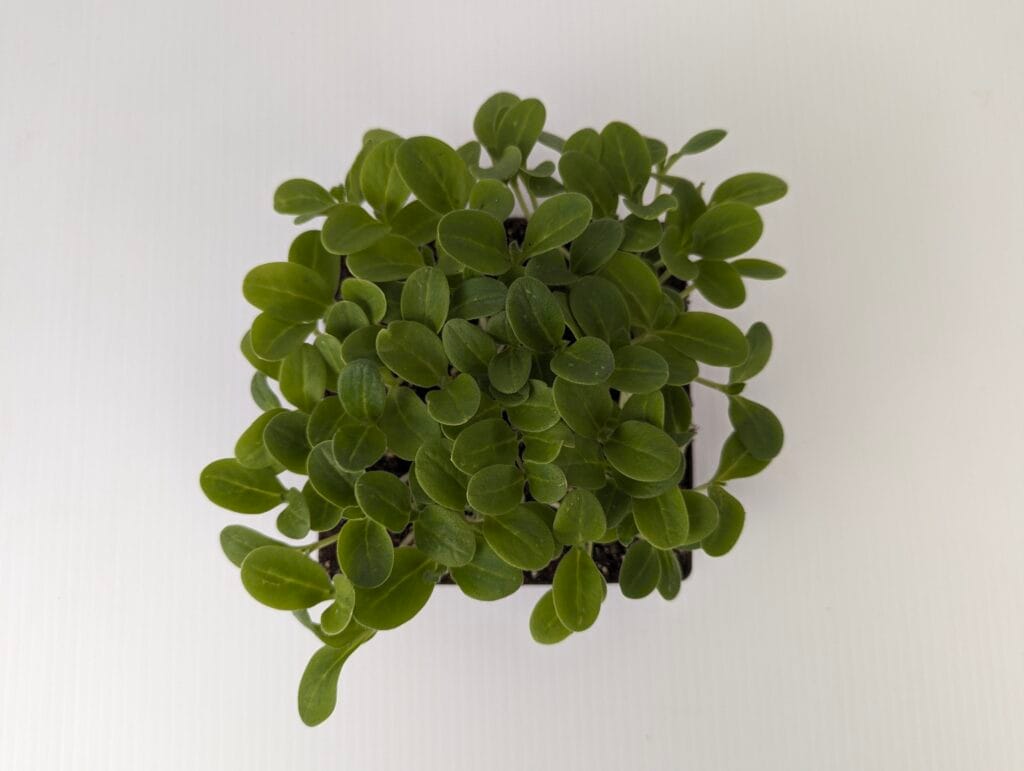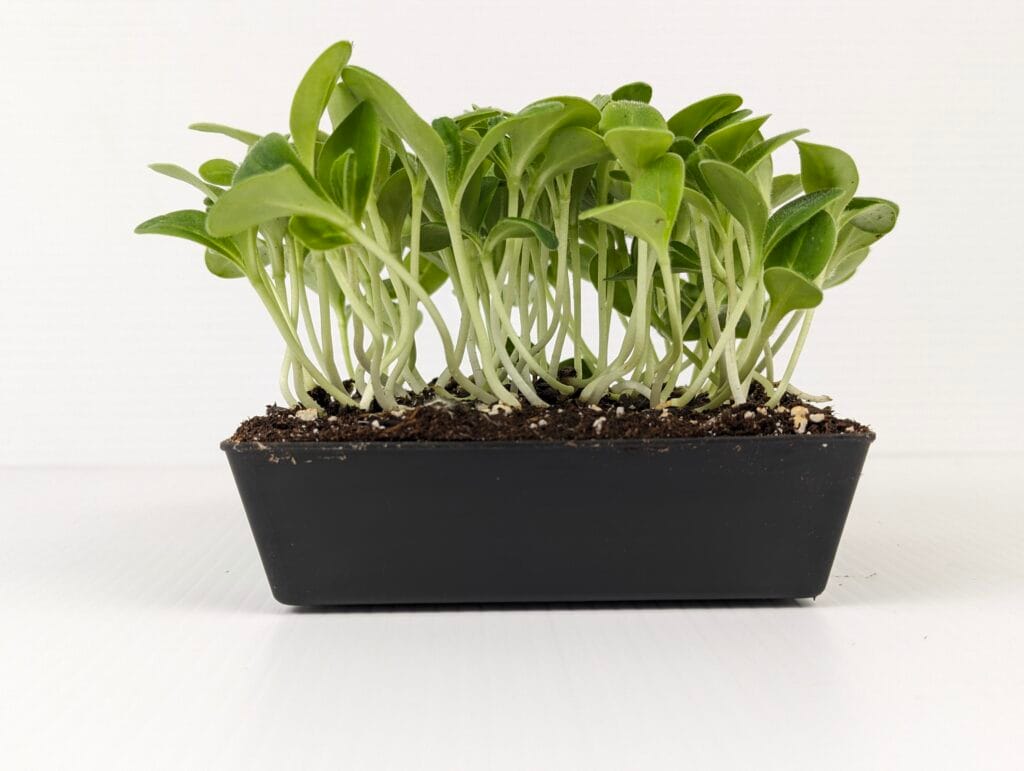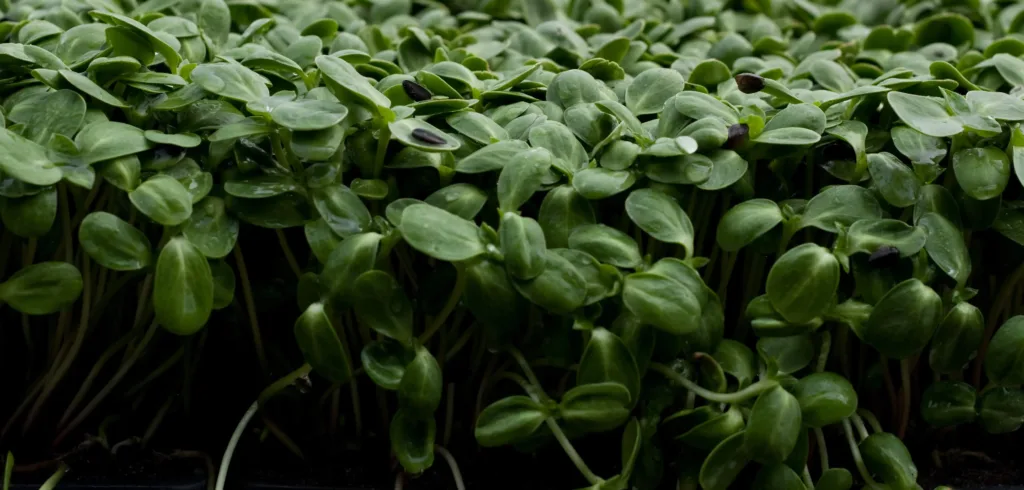Introduction to Borage
Microgreens have become a staple in the world of fresh, nutrient-packed produce. They’re quick to grow, colorful, and full of flavor — making them a favorite among urban farmers, chefs, and health-conscious consumers. But not all microgreens are created equal.
One crop, in particular, raises serious red flags: borage microgreens.
Borago officinalis, commonly known as borage, is a well-known herb in Europe and beyond. Its fuzzy leaves and star-shaped blue flowers are edible and often used in teas, salads, or traditional dishes like “Grüne Soße.” The plant also attracts pollinators and is often praised for its medicinal compounds and gamma-linolenic acid content.
But beneath this appealing profile lies a class of naturally occurring toxins: pyrrolizidine alkaloids (PAs).

What Are Pyrrolizidine Alkaloids (PAs)?
PAs are compounds produced by some plants as a defense mechanism against herbivores. While effective in nature, they’re toxic to humans — particularly to the liver. Chronic exposure to even low doses of certain PAs has been associated with liver damage and increased cancer risk. Some types are genotoxic, meaning they can damage DNA.
Because of these health concerns, the European Union has set strict regulatory limits on PA levels in foods such as teas, herbs, and leafy greens — including borage.
New Research: Borage Microgreens and PA Levels
A September 2024 study published in the journal Food Control analyzed the PA content of borage at various stages of growth — including mature leaves, flowers, and microgreens.
The findings are sobering:
- Borage microgreens contained PA levels exceeding EU legal limits by an average factor of 130.
- Commercial samples of borage microgreens had PA concentrations as high as 1.6 million μg/kg fresh weight — making them among the highest recorded for any edible plant tissue.
- Even a small 2-gram serving (used as a garnish or salad topping) could exceed safe daily exposure levels, especially for children.
- More mature borage leaves did have lower PA levels — but even those often exceeded regulatory limits before the plant flowered.
Why Are Borage Microgreens So High in Toxic Compounds?

In borage, the concentration of toxic alkaloids appears to be highest during the earliest growth stages — precisely when microgreens are harvested.
This means that borage microgreens, despite their appealing flavor and nutritional claims, may pose a real health risk — a risk that neither growers nor consumers may fully understand.
Are All PAs Regulated?
Another issue the study highlighted is that not all toxic PAs present in borage are currently covered by EU food regulations. In particular, acetylated PAs like 7-acetyl-lycopsamine-N-oxide — which are common in borage and have higher genotoxic potential — are not included in the current monitoring framework.
So even when growers or processors test for regulated PAs, they may be missing a large portion of the actual toxicity.
North American Regulations
In contrast to the EU, where specific maximum PA levels are set in law, North American regulation is patchier, less proactive, and more dependent on industry self-monitoring and reactive enforcement. That means a product like borage microgreens could legally be sold in many cases, even if it contains toxicologically concerning levels of PAs.
If you’re producing or selling in North America, it would be wise to self-regulate and follow EU safety standards as a best practice — especially if your customers are truly health-conscious or if you’re marketing products for children or frequent consumption.
What Does This Mean for Growers?
If you’re a microgreens grower, especially one marketing to health-conscious consumers, it’s critical to recognize that not all edible plants are safe at the microgreen stage.
The study states:
In summary, our results indicate that the PA contents in borage leaves are highest in emerging plants and decrease with the progression of plant or leaf maturity. The findings suggest that borage microgreens may not be suitable for human consumption and that further regulatory consideration of acetylated PA is warranted.
This means growing and selling borage microgreens could:
- Pose legal risks (particularly in regulated markets)
- Damage your reputation if consumers experience health issues
- Undermine trust in microgreens as a whole
Even if you grow for personal use, the health risks — especially for children and people with liver conditions — are simply too great to ignore.
A Responsible Approach: Avoid Borage Microgreens
Until further research or improved detoxification techniques are available, the best course of action is caution. Borage may have a place in the herb garden — but not in your microgreens tray.
Consider safer and better-studied microgreen options like:
- Sunflower
- Broccoli
- Radish
- Pea shoots
- Amaranth
These varieties are not only nutrient-rich but have a long track record of safe consumption.
In Closing
Borage microgreens might look great in a photo — but growing or selling them without understanding the risks could be a serious misstep. When it comes to food safety and consumer trust, it’s better to grow what you know is safe.
You can read the full study here.

Leave a Reply